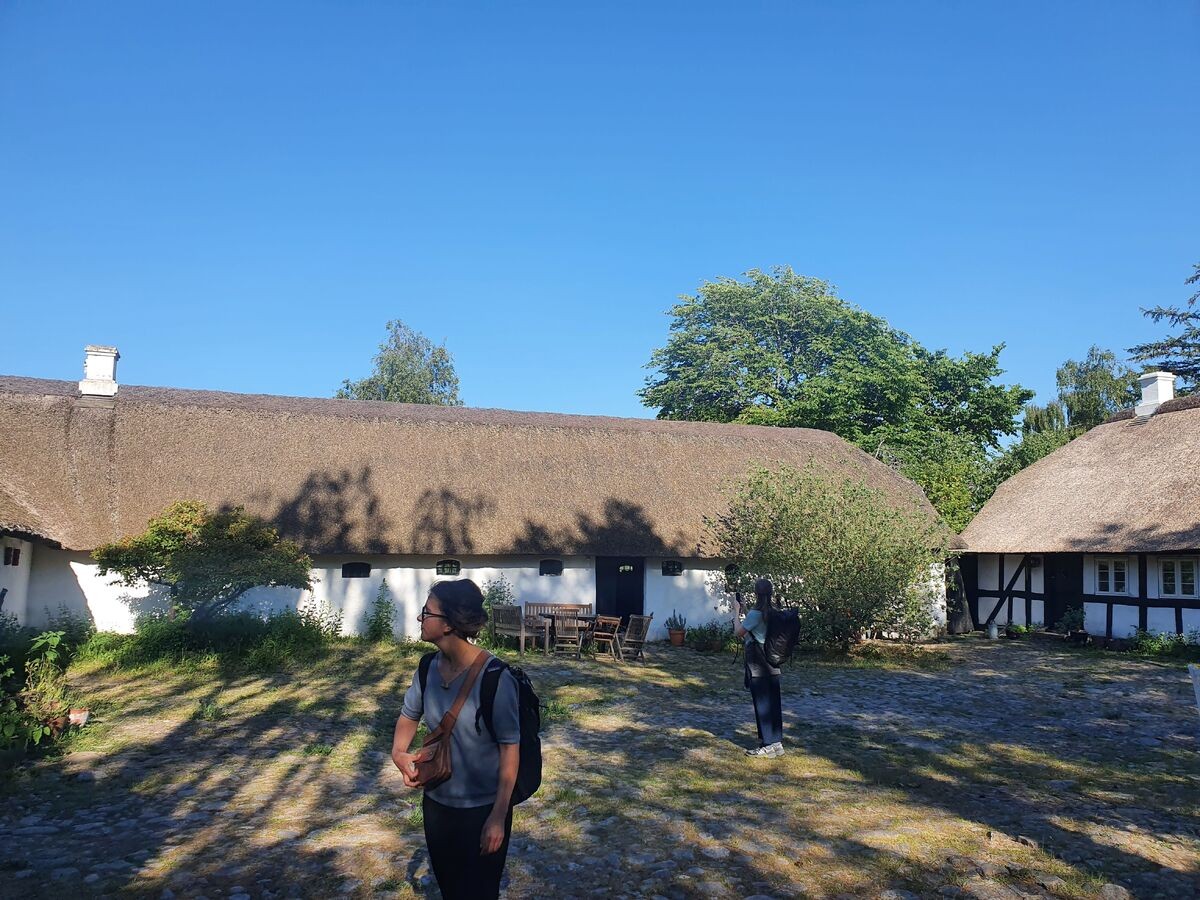Blog by Hannah Draper on the IETM Plenary Meeting Aarhus 2023

‘Do you know how to handle the place/space where you’re at?’
This is one of the questions that has resonated with me since attending the IETM Plenary Meeting in Aarhus in June. It defined an attention to knowing the language of a place, tending to togetherness, and creating spaces which enable more connected ways of relating to happen.
Over the few days I was there, watching performances, visiting residency spaces, attending talks, and participating in group conversations, I circled back to this question of how to grow knowledge of the places I live and the communities I move within and how this might inform and inspire my practice in relation to working with site-specific work, ecology, and movement.
Performance as a way of meeting
Whilst I have often thought about performing as a way of sharing, ‘performance as a way of meeting’ identified the potential for encountering not only people, but places or nonhumans, through performance. A meeting also implies a start, rather than thinking of performance as an end point or closed encounter. Within capitalist and colonial structures performance has been permeated not only by monetary exchange, but by encouraging an extractivist mindset from the audience to the performers. Instead, how might performance enable mutuality?
…and/or ‘How can artists be ‘agents of togetherness’?’
I often feel I see two dominant ways of making art grappling with issues of climate - 1) representation of the climate crisis or 2) presenting alternatives – whether this be through new abstract sensory worlds, participatory projects or re-imagined futures. Much of the work at IETM lent towards model two, investigating sensory engagement with the world, nonhumans, and land. From Secret Hotel’s playful (and delicious!) Banquet for Bees, AquaSonic’s underwater soundscape Between Music, Det Feröesche Compagnie’s intimate and moving Castle of Joy which made me weep, to the National Theatre of Greenland’s The Traveller in which the audience was invited to sit and join in with the performers while they told stories, sang, danced, and lit incense. These performances offered the audience an experience with materials, rituals, and other people and bodies which encouraged slowness, attending to the bodies’ needs, desires, and limits, and facilitating spaces for collective experience.
In a keynote speech on climate justice, Aili Keskitalo (Former President of Sápmi/Norway) also spoke about art as having the potential to translate and transpose methodologies, knowledges, and beliefs. Yet within this talk the phrase ‘never about us without us’ also arose; a reminder of the danger of reinforcing extractive relationships to people and place – of the need to question – Whose beliefs? Whose histories? Whose knowledge?
What am I doing? (Not) what will I do?
When considering the climate crisis, I can become caught in what I will do, often deferring to a more ideal future. Instead, I want to attend to now – to what I am (or am not) doing, what is in existence and what surrounds me; what current principles, practices, and values do I uphold in my work and my day-to-day life? How might sensory engagement with, through and in relation to my surroundings, environment, and contexts affect my movement as a dancer and as a person and sustain myself and others? How can I relate through movement to histories of sites? Might ‘ongoingness’ be a better word than ‘sustainability’ away from greenwashed or consumerist language and values?
My time in Aarhus left me with swirling images of dusty Danish fields in drought, underwater singers, wooden castles built on the Faroe Islands, and more questions than answers (which I think that feels like a good place to be). I hope some of the questions I’ve shared might be helpful prompts/ propositions/ starting places/ supports/ ongoing considerations for others.
Hannah was supported to attend IETM Aarhus through Creative Scotland's IETM Bursaries
